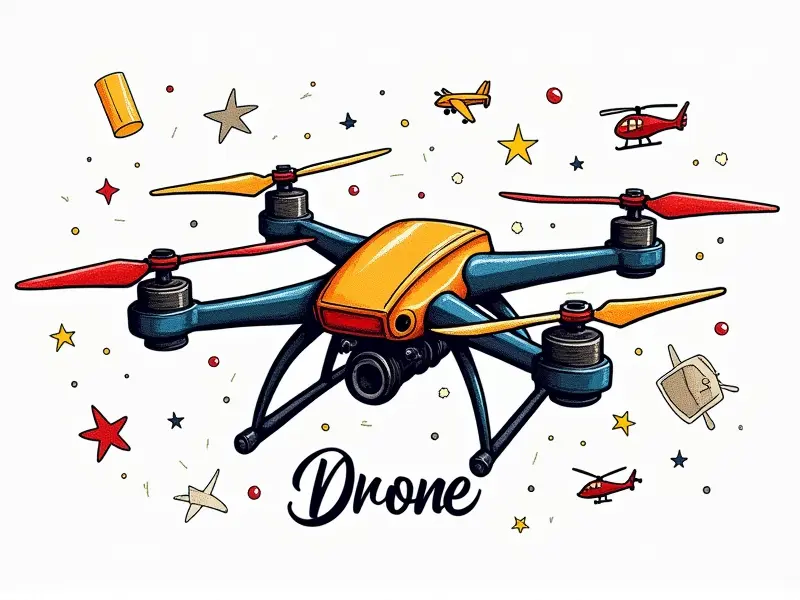Why does my RC plane stall?

Why Does My RC Plane Keep Stalling?
If you're an RC plane enthusiast, you've likely encountered the frustrating issue of your aircraft stalling mid-flight. Understanding why this happens and how to prevent it is crucial for improving your flying skills and ensuring a smoother flight experience.
Common Reasons for RC Plane Stalls
- Airflow Disruption: When the angle of attack (AoA) becomes too steep, airflow over the wings can separate from the surface, leading to a stall.
- Inadequate Speed: Flying at speeds below the minimum safe speed for your aircraft model can cause stalls due to insufficient lift generation.
- Poor Aerodynamic Design: Certain RC plane designs are more prone to stalling than others, especially if they lack proper wing camber or stall strips.
Fixing RC Plane Stall Issues Quickly
To address stalls promptly, consider the following steps:
- Increase Throttle: Boost engine power to generate more lift and overcome the stall condition.
- Reduce Angle of Attack: Lower the nose slightly to decrease the AoA and re-establish airflow over the wings.
- Improve Flight Technique: Practice maintaining a steady speed and angle during takeoff, climb, and cruise phases.
Understanding RC Plane Aerodynamics
Aerodynamic principles are fundamental to preventing stalls. Key concepts include:
- Lift Generation: Lift is created by the difference in air pressure above and below the wing, which depends on speed and AoA.
- Drag Forces: Parasitic drag (from friction) and induced drag (from lift generation) affect flight efficiency and stability.
- Moment of Inertia: The tendency of an object to resist changes in its rotational motion, impacting the plane's maneuverability.
Tips to Avoid RC Plane Stalls
Implement these strategies to minimize stall occurrences:
- Proper Takeoff and Climb: Ensure a smooth transition from ground effect to full flight by maintaining optimal speed and AoA.
- Adequate Speed Management: Keep your plane at or above the minimum safe flying speed throughout all phases of flight.
- Regular Maintenance Checks: Inspect your RC plane regularly for any aerodynamic issues, such as damaged wings or incorrect trim settings.
Solving RC Plane Stability Problems
Stability is crucial to preventing stalls. Here’s how to enhance it:
- Balanced Center of Gravity (CG): Ensure your plane's CG is correctly positioned for optimal stability and control.
- Effective Control Surfaces: Adjust the elevator, aileron, and rudder settings to maintain proper balance during flight.
- Aerodynamic Enhancements: Install stall strips or vortex generators on your wings to improve lift characteristics at higher AoA.
Preventing RC Plane Stalls Effectively
To prevent stalls, focus on these preventive measures:
- Pilot Training and Experience: Gain more experience flying different types of RC planes to understand their unique characteristics.
- Aerodynamic Design Improvements: Modify your plane's design if necessary, such as adding winglets or changing the airfoil shape.
- Flight Planning and Preparation: Always plan your flight path considering weather conditions, wind direction, and other environmental factors.
Why Your RC Plane Keeps Dropping
Drops are often a result of stalls or improper control inputs. Here’s how to address them:
- Monitor Airspeed: Keep an eye on your airspeed gauge and maintain sufficient speed to prevent drops.
- Adjust Control Surfaces: Use the elevator to adjust pitch, ensuring you’re not flying too steeply or too shallowly.
- Practice Recovery Techniques: Learn how to recover from stalls quickly by reducing AoA and increasing throttle.
Beginner's Guide to RC Plane Stability
For beginners, mastering stability is key. Follow these steps:
- Start with Simple Designs: Choose planes that are easier to fly and have better aerodynamic characteristics.
- Familiarize Yourself with Controls: Understand how each control surface affects the plane's behavior before attempting more complex maneuvers.
- Seek Guidance from Experienced Pilots: Learn from those who have experience in flying RC planes and can offer valuable advice.
Fixing RC Plane Stall Issues Fast
To quickly resolve stall issues, follow these steps:
- Immediate Throttle Increase: Apply more power to generate lift and prevent the plane from dropping.
- Straighten Wing Angle: Adjust the elevator to reduce AoA and re-establish airflow over the wings.
- Review Flight Data: Analyze your flight data to identify patterns that lead to stalls and adjust accordingly.
Mastery RC Plane Stability Techniques
To master stability techniques, consider these advanced strategies:
- Advanced Aerobatics Training: Practice complex maneuvers like loops and rolls to improve your control over the plane.
- Use of Flight Simulators: Utilize simulators to practice various scenarios without risking damage to your RC plane.
- Ongoing Education: Stay updated with new technologies, aerodynamic advancements, and best practices in RC flying.
Conclusion
Maintaining stability and preventing stalls are essential for a successful RC flight. By understanding the common reasons behind stalls, implementing preventive measures, and mastering advanced techniques, you can enhance your flying skills and enjoy smoother, more enjoyable flights. Remember to always prioritize safety and seek guidance from experienced pilots when needed.

